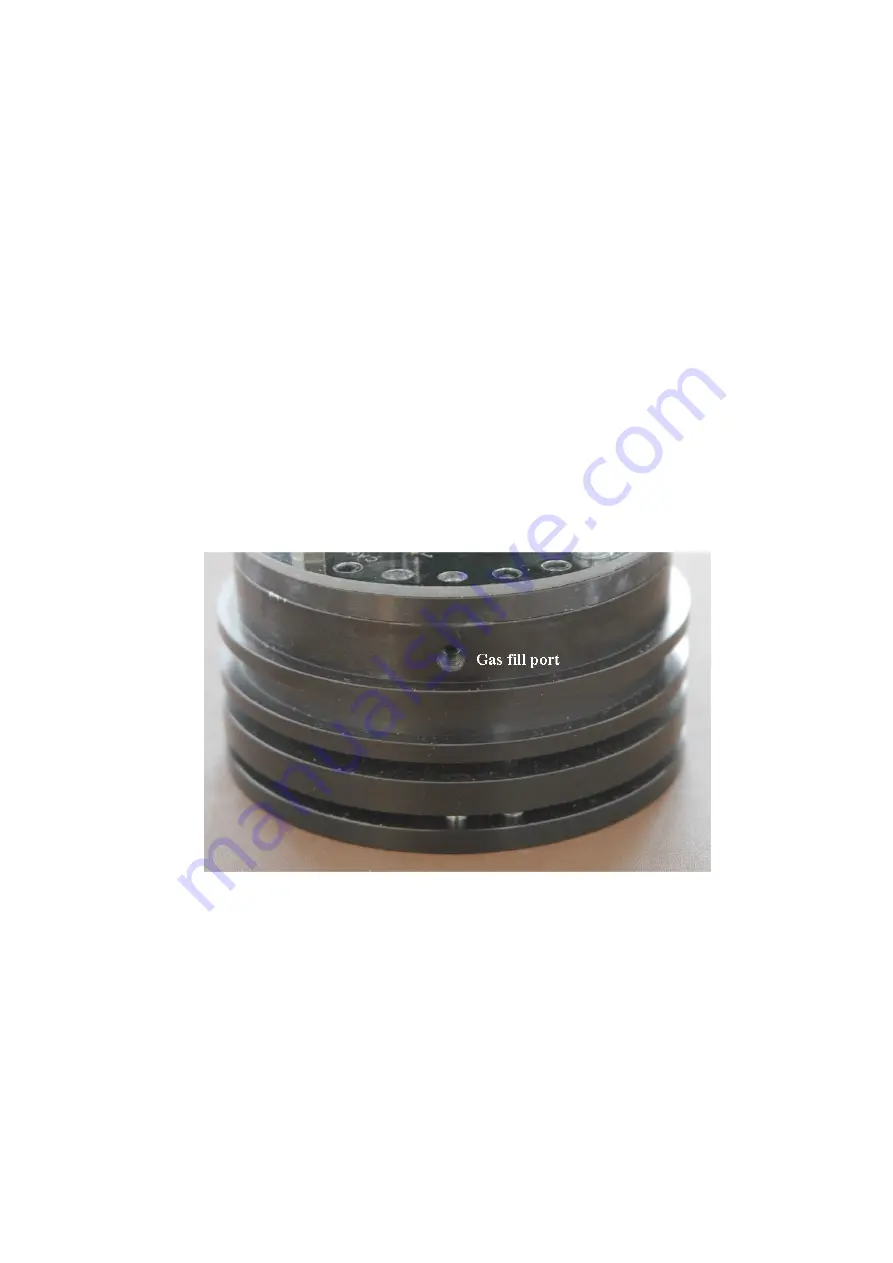
Handbook for the TRIUS PRO-825C Issue 1 September 2020
29
also clean, and then carefully replace the camera front barrel and screw it into place.
(If the heat sink seal is disturbed, renew it with fresh compound before
reassembling).
7)
Replace all the camera parts in reverse order and the job is done.
Dealing with condensation:
The TRIUS PRO-825C is designed to avoid condensation by minimising the volume of
gas trapped within the CCD cavity and by preventing moisture ingress. This normally
works very well, but storage of the camera in a humid location can lead to the
trapped argon becoming moist by diffusion through the optical window mounting
thread etc. and can result in condensation on the CCD window. If this becomes a
problem, try storing the camera in a warm, dry place, or in a plastic lunch box
containing a sachet of silica gel desiccant. If this is not effective, it is possible to flush
the CCD chamber with dry argon from a small welding gas cylinder. Such argon gas
cylinders, valves and suitable plastic tubing, are readily available from many car
spares suppliers, such as Halfords, in the UK. Two ports are provided in the sides of
the CCD cavity and these may be accessed by unscrewing the rear plate of the
camera and then sliding off the main barrel.
The ports are sealed by M4 stainless set-screws and soft plugs, which may be
removed to provide access to the chamber gas fill. You will need to make some kind
of nozzle to fit the gas ports, but simply tapering the end of the standard 4 mm
plastic gas tubing that is used with small welding bottles, will probably be sufficient.
To recharge the chamber, first remove both gas plugs and then insert the tapered
end of the argon cylinder tube into one port. Gently turn on the argon supply for
about 10 seconds and then refit the plug into the output port. The filling tube may
then be extracted and the second port re-sealed.
N.B. DO NOT leave the camera switched on for long periods between uses. The cold
CCD will collect ice by slow diffusion through any small leaks and this will become
corrosive water on the cooler and CCD pins when the power is removed. If
substantial amounts of moisture are seen, dismantle the camera and dry it
thoroughly.



































